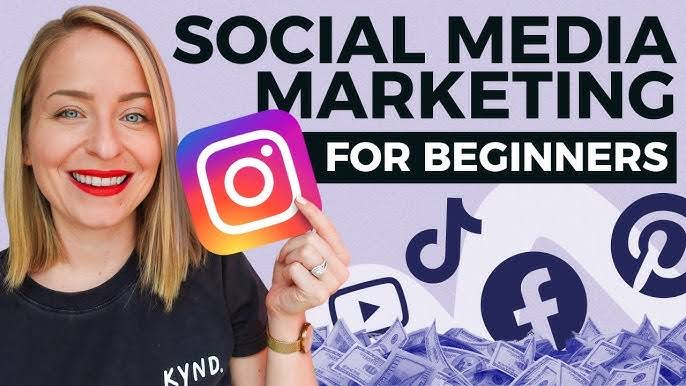Social media has transformed into one of the most powerful tools for businesses and individuals to reach their audiences. With billions of active users across different platforms, it offers endless opportunities for building brand awareness, engaging customers, and driving sales. However, effective social media marketing requires more than simply posting content. It demands a thoughtful strategy, creativity, and consistency. Understanding how to leverage social platforms can make the difference between blending into the noise and standing out as a strong digital presence.
Define Your Goals Clearly
The foundation of any successful social media marketing effort is having clear goals. Without defined objectives, it becomes difficult to measure success or know if your strategies are working.
Some common goals include:
- Building brand awareness and recognition.
- Driving website traffic and generating leads.
- Increasing engagement through likes, shares, and comments.
- Boosting sales and conversions.
- Establishing industry authority and credibility.
Defining goals helps shape the type of content you create and the platforms you prioritize.
Know Your Target Audience
To market effectively, you must understand who your audience is, what they care about, and where they spend their time online. Each social media platform attracts different user demographics, so tailoring your strategy is essential.
Steps to identify your audience include:
- Analyzing age, location, and interests of your ideal customers.
- Monitoring competitors to see who they engage with.
- Using analytics tools to track audience behavior.
- Creating buyer personas to guide content creation.
The better you know your audience, the easier it is to create content that resonates.
Choose the Right Platforms
Not all social media platforms will suit every business. Some platforms are more visual, while others are better for professional networking or quick updates. Choosing wisely ensures you focus your energy where it counts.
For example:
- Facebook works well for community building and broad audiences.
- Instagram is ideal for visually appealing brands like fashion, food, and lifestyle.
- Twitter (X) supports real-time updates and customer engagement.
- LinkedIn is best for B2B networking and professional content.
- TikTok is popular for short, creative videos that go viral.
Instead of spreading thin across all platforms, focus on those that align with your audience and goals.
Create High-Quality and Valuable Content
Content is at the heart of social media marketing. Posting frequently is important, but the quality and value of content matter most. People engage with content that entertains, educates, or solves a problem.
Types of valuable content include:
- Educational posts like how-to guides or industry tips.
- Entertaining content such as memes, challenges, or creative videos.
- Inspirational stories and quotes that resonate with your audience.
- Behind-the-scenes posts showing authenticity.
- User-generated content that highlights real customer experiences.
A mix of these content types keeps your feed fresh and engaging.
Be Consistent with Posting
Consistency is key to maintaining visibility and building trust. Posting sporadically makes it difficult for followers to stay connected with your brand. Having a content calendar helps you stay organized and ensures regular posting.
Tips for consistency include:
- Scheduling posts in advance with tools like Buffer or Hootsuite.
- Maintaining a balance of promotional and non-promotional content.
- Sticking to a posting frequency that matches audience activity.
- Using consistent branding in colors, tone, and visuals.
Consistency reinforces your identity and helps your audience know what to expect.
Engage with Your Audience
Social media is not just about broadcasting messages—it is about building relationships. Engaging with your audience shows that you value their input and fosters loyalty.
Ways to engage effectively:
- Respond to comments and messages promptly.
- Ask questions in posts to spark conversations.
- Host polls, quizzes, or live sessions.
- Share user-generated content to appreciate your audience.
- Acknowledge feedback, both positive and negative, with professionalism.
Engagement makes your audience feel heard and creates a sense of community around your brand.
Leverage Paid Advertising
Organic reach on many social platforms has become limited due to algorithms. Paid advertising can help businesses target specific demographics and achieve faster results.
Benefits of paid ads include:
- Precise targeting based on age, interests, and location.
- Retargeting users who have interacted with your brand before.
- Measurable results to track performance.
- Flexibility in budget and campaign duration.
Using paid ads strategically alongside organic content helps maximize visibility and conversions.
Track and Analyze Performance
Measuring your results is crucial to refining your strategy. Social media platforms provide analytics that give insights into what is working and what is not.
Metrics to monitor include:
- Engagement rate (likes, comments, shares).
- Reach and impressions.
- Click-through rates for links.
- Conversion rates from campaigns.
- Follower growth trends.
Regular analysis helps you adjust strategies, focus on high-performing content, and improve return on investment.
Stay Updated with Trends
Social media evolves rapidly, and trends change quickly. Staying updated ensures your content remains relevant and engaging.
Current ways to stay on trend:
- Following influencers in your industry.
- Keeping an eye on trending hashtags and challenges.
- Experimenting with new content formats like Reels or Stories.
- Using trending audio and memes to boost visibility.
Adapting to trends while staying true to your brand identity makes your content more appealing.
Conclusion
Using social media for marketing is no longer optional; it is an essential part of modern business strategy. Success comes from defining clear goals, knowing your audience, choosing the right platforms, and creating content that provides real value. Consistency, engagement, paid advertising, and analytics help maintain growth, while staying updated with trends ensures you remain competitive. When used strategically, social media becomes a powerful tool to build lasting connections, strengthen brand identity, and drive long-term business success.



